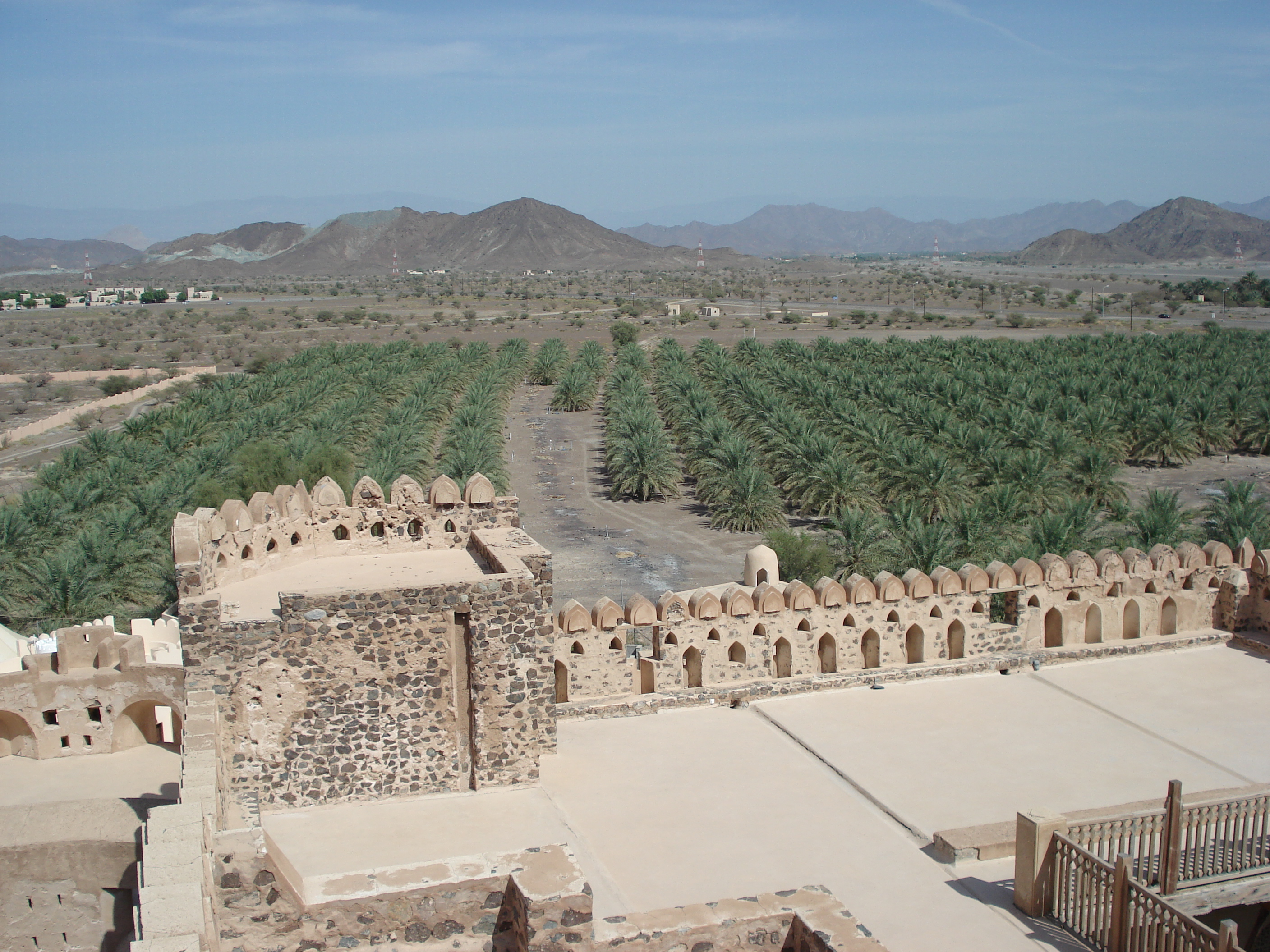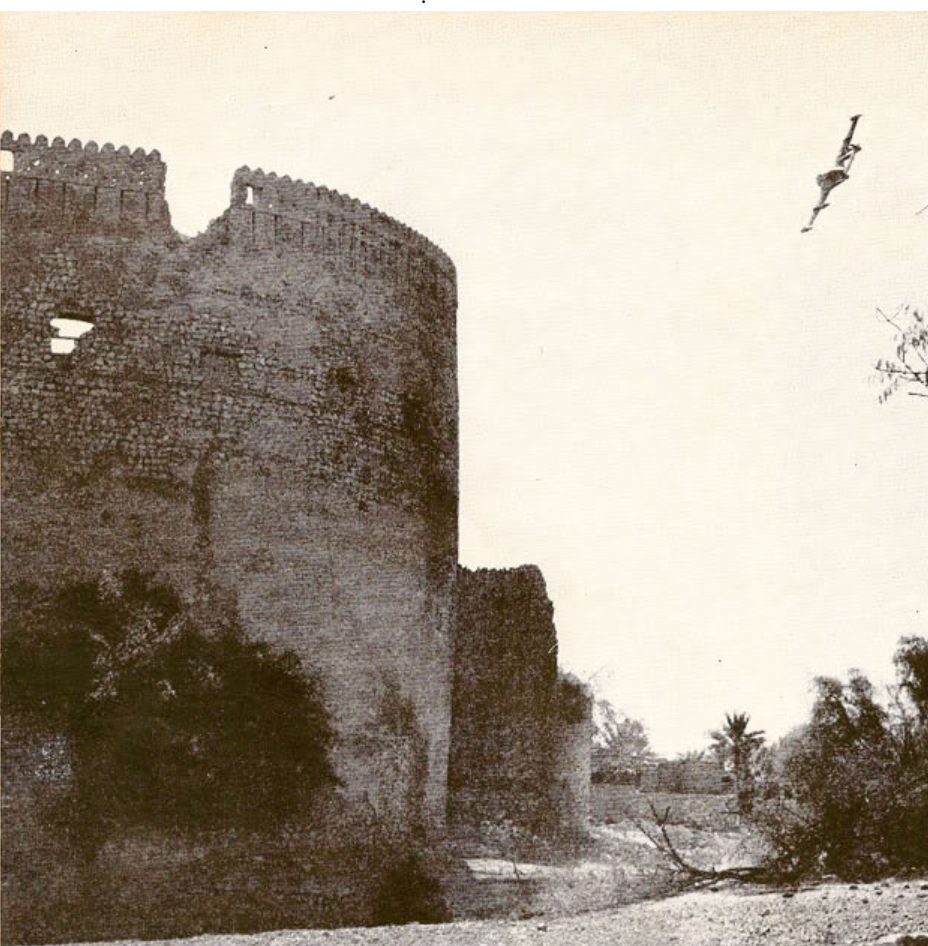|
Jabrin
Jabrin, also known as Jabreen, ( ar, جبرين) is a small town in Ad Dakhiliyah Governorate in northeastern Oman near Nizwa and the Jabal Akhdar Mountains. The town is known for its impressive castle, which was built by the Yaruba dynasty Imam Bil'arab bin Sultan, who ruled from 1679 to 1692 and who was buried onsite. The castle can be visited independently with an audio guide that is provided at the entrance and which lasts about 25 minutes. Climate See also * List of cities in Oman This is a list of cities and towns in Oman. *Adam, Oman, Adam *Seeb, Oman, As Sib *Al Ashkharah *Al Buraimi *Al Hamra, Oman, Al Hamra *Al Jazer *Blue City, Oman, Al Madina A'Zarqa, formerly known as Blue City *Al Suwaiq *Bahla *Barka, Oman, B ... References Gallery File:Jebrin castle 1.jpg, File:Jebrin castle 2.jpg, File:Jebrin castle 3.jpg, File:Jabrin 4.jpg, File:Jqabrin castle 5.jpg, File:Jabrin castle 7.jpg, File:Jabrin castle 6.jpg, File:Jabrin castle 8.jpg, Exter ... [...More Info...] [...Related Items...] OR: [Wikipedia] [Google] [Baidu] |
Bil'arab Bin Sultan
Bil'arab bin Sultan () (died 1692) was the third of the Yaruba dynasty of Imams of Oman, a member of the Ibadi sect. He ruled from 1679 to 1692. Bil'arab bin Sultan succeeded as Imam in 1679 after the death of his father, Sultan bin Saif. This confirmed that the succession was now hereditary, since his father had also succeeded dynastically, while in the Ibadi tradition the Imam was elected. He is known for building a fine fort at Jabrin. Most of his reign was occupied in a struggle with his brother, Saif bin Sultan Saif bin Sultan () was the fourth of the Yaruba dynasty Imams of Oman, a member of the Ibadi sect. He ruled from 1692 to 1711. Where Omani presence became firmly established on the coast. Early years Saif bin Sultan was the son of the second Yar ..., who succeeded Bil'arab bin Sultan when he died at Jabrin in 1692. References Citations Sources * Omani monarchy Omani imams Omani Ibadi Muslims 1692 deaths Yaruba dynasty People from Ad Dakhiliyah Gov ... [...More Info...] [...Related Items...] OR: [Wikipedia] [Google] [Baidu] |
Yaruba Dynasty
The Yarubid dynasty () (also the Yaruba or Ya'arubi) were rulers of Oman between 1624 and 1742, holding the title of Imam. They expelled the Portuguese from coastal strongholds in Muscat and united the country. They improved agriculture, expanded trade and built up Oman into a major maritime power. Their forces expelled the Portuguese from East Africa and established long-lasting settlements on Zanzibar, Mombasa and other parts of the coast. The dynasty lost power during a succession struggle that started in 1712 and fell after a prolonged period of civil war. Background Oman has traditionally been divided between the relatively barren and sparsely populated interior and the more populous coastal region. There was often little or no overall government in the interior, and the tribes often fought amongst each other. They shared belief in the Ibadi branch of Islam, distinct from the main Sunni and Shia schools. The coastal region, particularly the northeast coast around Muscat, was ... [...More Info...] [...Related Items...] OR: [Wikipedia] [Google] [Baidu] |
Jebel Akhdar (Oman)
The Jebel Akhdar or Al Jabal Al Akhdar ( ar, ٱلْجَبَل ٱلْأَخْضَر, Al-Jabal Al-Akhḍar, lit=The Green Mountain), is part of Al Hajar Mountains range in Ad Dakhiliyah Governorate of Oman. It rises to a height of and encompasses the Saiq Plateau at 2,000 m above sea level. Jebel Akhdar is famous for its labyrinth of wadis and terraced orchards, where pomegranates, apricots and roses grow in abundance due to its mild Mediterranean climate. Description This mostly limestone mountain is one of the highest points in Oman and eastern Arabia. Jebel Akhdar lies at the central section of Al Hajar range, located around from Muscat and accessible only by four-wheel drive. The range is mostly desert, but at higher altitudes receives around of precipitation annually — moist enough to allow the growth of shrubs and trees and support agriculture. It is this that gives the mountains their "green" name. An old stronghold on the inland side of the mountain is Birkat al-Mawz, ... [...More Info...] [...Related Items...] OR: [Wikipedia] [Google] [Baidu] |
List Of Cities In Oman ...
This is a list of cities and towns in Oman. * Adam * As Sib * Al Ashkharah * Al Buraimi * Al Hamra * Al Jazer * Al Madina A'Zarqa, formerly known as Blue City * Al Suwaiq * Bahla * Barka * Bidbid *Bidiya * Duqm * Haima * Ibra * Ibri * Izki * Jabrin *Jalan Bani Bu Hassan * Khasab * Mahooth * Manah *Masirah * Matrah * Mudhaybi * Mudhaireb *Muscat *Nizwa * Quriyat * Raysut *Rustaq *Ruwi * Saham * Shinas * Saiq *Salalah *Samail * Sohar * Sur * Tan`am *Thumrait See also * Governorates of Oman * Provinces of Oman * {{List of cities in the Middle East Cities A city is a human settlement of notable size.Goodall, B. (1987) ''The Penguin Dictionary of Human Geography''. London: Penguin.Kuper, A. and Kuper, J., eds (1996) ''The Social Science Encyclopedia''. 2nd edition. London: Routledge. It can be def ... [...More Info...] [...Related Items...] OR: [Wikipedia] [Google] [Baidu] |
Subdivisions Of Oman
Oman is divided into eleven governorates (''muhafazah''), and has been since 28 October 2011. Each of the 11 governorates are divided into ''wilayat'' (provinces). Regions and governorates before 2011 Before 28 October 2011, Oman was divided into five regions (''mintaqah'') and four governorates (''muhafazah''). The governorates were Muscat, Dhofar, Buraimi and Musandam. Buraimi was created in October 2006 from parts of Ad Dhahirah Region. The regions are further subdivided into 61 wilayat. Each region has one or more regional center with a grand total of twelve. See also * ISO 3166-2:OM References External linksArabian names at Geonames.de [...More Info...] [...Related Items...] OR: [Wikipedia] [Google] [Baidu] |
Ad Dakhiliyah Region
Ad Dakhiliyah ( ar, الداخلية, Ad-Dāḫilīyah, meaning: The Interior) is one of the governorates (''muhafazah'') of Oman with Nizwa town as the regional center. It was previously a region (''mintaqah''). It became a governorate on 28 October 2011. Provinces Ad Dakhiliyah Governorate consists of eight provinces (wilayat): *Nizwa *Samail * Bahla *Adam Adam; el, Ἀδάμ, Adám; la, Adam is the name given in Genesis 1-5 to the first human. Beyond its use as the name of the first man, ''adam'' is also used in the Bible as a pronoun, individually as "a human" and in a collective sense as " ... * Al Hamra * Manah * Izki * Bid Bid Demographics References Governorates of Oman {{Oman-geo-stub ... [...More Info...] [...Related Items...] OR: [Wikipedia] [Google] [Baidu] |
Ad Dakhiliyah Governorate
Ad Dakhiliyah ( ar, الداخلية, Ad-Dāḫilīyah, meaning: The Interior) is one of the governorates (''muhafazah'') of Oman with Nizwa town as the regional center. It was previously a region (''mintaqah''). It became a governorate on 28 October 2011. Provinces Ad Dakhiliyah Governorate consists of eight provinces (wilayat): *Nizwa *Samail * Bahla *Adam Adam; el, Ἀδάμ, Adám; la, Adam is the name given in Genesis 1-5 to the first human. Beyond its use as the name of the first man, ''adam'' is also used in the Bible as a pronoun, individually as "a human" and in a collective sense as " ... * Al Hamra * Manah * Izki * Bid Bid Demographics References Governorates of Oman {{Oman-geo-stub ... [...More Info...] [...Related Items...] OR: [Wikipedia] [Google] [Baidu] |
Oman
Oman ( ; ar, عُمَان ' ), officially the Sultanate of Oman ( ar, سلْطنةُ عُمان ), is an Arabian country located in southwestern Asia. It is situated on the southeastern coast of the Arabian Peninsula, and spans the mouth of the Persian Gulf. Oman shares land borders with Saudi Arabia, the United Arab Emirates, and Yemen, while sharing Maritime boundary, maritime borders with Iran and Pakistan. The coast is formed by the Arabian Sea on the southeast, and the Gulf of Oman on the northeast. The Madha and Musandam Governorate, Musandam exclaves are surrounded by the United Arab Emirates on their land borders, with the Strait of Hormuz (which it shares with Iran) and the Gulf of Oman forming Musandam's coastal boundaries. Muscat is the nation's capital and largest city. From the 17th century, the Omani Sultanate was Omani Empire, an empire, vying with the Portuguese Empire, Portuguese and British Empire, British empires for influence in the Persian Gulf and Indian ... [...More Info...] [...Related Items...] OR: [Wikipedia] [Google] [Baidu] |
Nizwa
Nizwa ( ar, نِزْوَى, Nizwā) is the largest city in Ad Dakhiliyah Region in Oman and was the capital of Oman proper. Nizwa is about (1.5 hours) from Muscat. The population is estimated at around 72,000 people, including the two areas of Burkat Al Mooz and Al-Jabel Al-Akhdar. Nizwa is one of the oldest cities in Oman and it was once a center of trade, religion, education and art. Its Jama (grand mosque) was formerly a center for Islamic learning. Nizwa acquired its importance because it has been an important meeting point at the base of the Western Hajar Mountains. Set amid a verdant spread of date palms, it is strategically located at the crossroads of routes linking the interior with Muscat and the lower reaches of Dhofar thus serving as the link for a large part of the country. Today, Nizwa is a diverse prosperous place with numerous agricultural, historical and recreational aspects. Nizwa is a center for date growing and is the market place for the area. Etymology ... [...More Info...] [...Related Items...] OR: [Wikipedia] [Google] [Baidu] |
Populated Places In Oman
Population typically refers to the number of people in a single area, whether it be a city or town, region, country, continent, or the world. Governments typically quantify the size of the resident population within their jurisdiction using a census, a process of collecting, analysing, compiling, and publishing data regarding a population. Perspectives of various disciplines Social sciences In sociology and population geography, population refers to a group of human beings with some predefined criterion in common, such as location, race, ethnicity, nationality, or religion. Demography is a social science which entails the statistical study of populations. Ecology In ecology, a population is a group of organisms of the same species who inhabit the same particular geographical area and are capable of interbreeding. The area of a sexual population is the area where inter-breeding is possible between any pair within the area and more probable than cross-breeding with ind ... [...More Info...] [...Related Items...] OR: [Wikipedia] [Google] [Baidu] |


.jpg)

